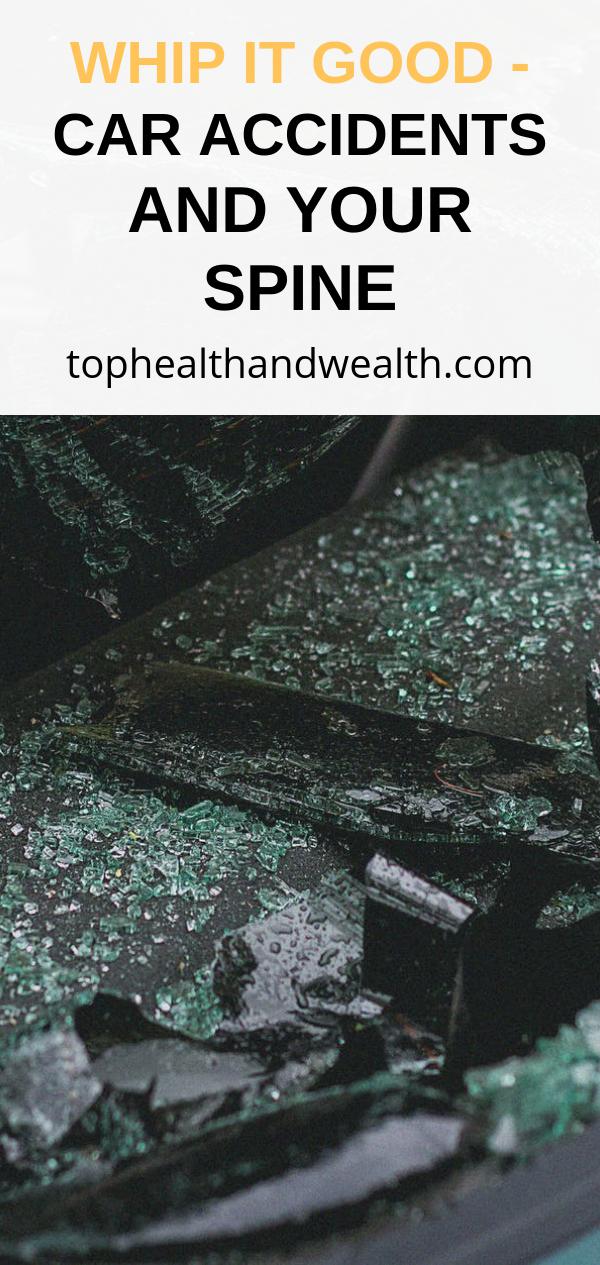Among the different causes of injuries among children and adults, car accidents have been reported as one of the top causes. It accounts for 55% of spinal injury cases in the US.
What kinds of injuries can I get from car accidents?

Car accident injuries affect different parts of the body. The most commonly affected are the head, neck, and spine, and at times some other organs of the body, too. But car accidents also frequently affect internal organs and upper and lower limbs. The three most common injuries would be the whiplash, traumatic brain injury, and back injury. Other injuries may include those of the limbs and internal organs.
Whiplash. The most common type of car accident back injury is the whiplash. It accounts for more than one million car accident back injuries each year. Ten percent of these car accident back injuries lead to long term disability. This type of car accident back injury occurs most often during rear-end collisions and can also when the car strikes an immobile object or gets hit broad-side by another vehicle. Whiplash happens when the head is violently jogged forward and backward upon the impact of the car. This may cause severe damage to the joints, discs, muscles, nerves, and ligaments of the neck and is most serious when a victim’s head is turned to the side during impact. Symptoms of this car accident back injuries can include muscle spasms in the neck and upper back area, increased neck pain with movement, and increasing pain in the base of the neck.
Traumatic Brain Injury. Traumatic brain injury (TBI) is a really serious injury that may result in a car accident. This occurs when the external force of a car accident traumatizes the brain. It may lead to permanent or temporary impairment of the neurological functions. Skull fractures, bruises of the brain (hematoma), and nerve damage are often related to such brain injury. Brain injuries are more common in side-impact car accidents than in rear-end auto accidents. Brain damage in a car accident is often related to the quick acceleration and deceleration of the brain, which causes injury to the point of impact and its opposite point.
Back Injuries. Thoracic disks and lumbar disks may also be injured in car accidents. Compression fractures may be caused in such accidents which can cause permanent disability. Also, herniations or bulges may cause spinal cord compression. Symptoms of spinal injuries include arm and/or leg weakness, paralysis, difficulty breathing, numbness, tingling, and abnormal bowel or bladder control. The back nerves, ligaments, and muscles may also be traumatized by a car accident, causing pain and inflammation.
Internal Organ Damage. Internal injuries from a car accident may include injuries to bowels, kidneys, spleen, liver, lungs, heart, or aorta. Fractured ribs are quite common and may also puncture lungs and other internal organs. Torn spleens are also a frequent injury.
Upper and Lower Limbs. Car accidents may cause minor or severe fractures to your hands, forearms, arms, shoulders, wrists, fingers, hips, legs, knees, heels, ankles, and feet if the impact has caused sudden pressure to the bones.
How can we treat these injuries?

Any car accident injury, if not fatal, may be cured by constant therapy and proper medications. Disc injuries may require surgery to remove disc material fragments or spinal fusion. Prescriptive medications are often used initially but for continuing pain and inflammation, patients are sent to physical therapists or chiropractors to rehabilitate motor functions and relieve the pain. Therapy generally includes infrared heat, hot packs, paraffin bath, hydrotherapy, diathermy, cold packs, ultrasound, electrical stimulation, muscle strengthening, traction, massage, or acupuncture. Another common treatment is steroid injection. Severe injuries may require hospitalization.
These accidents can be avoided by observing proper driving etiquette and checking your car’s seatbelts for full functionality. In the end, being careful on the road is the best solution. Prevent yourself from getting into any car-related accidents by keeping your eyes on the road, concentrating on your driving, and always following driving safety precautions.
